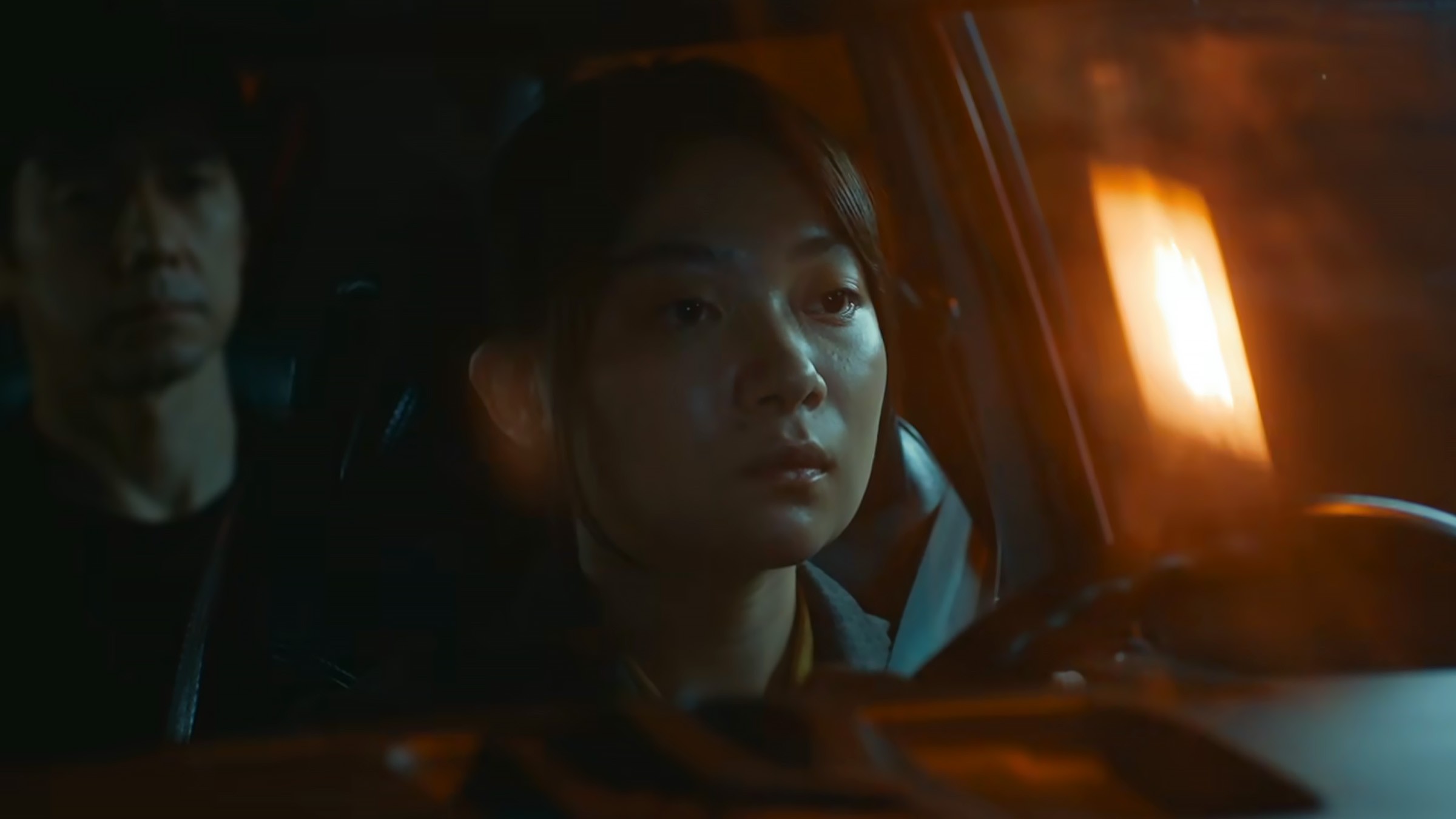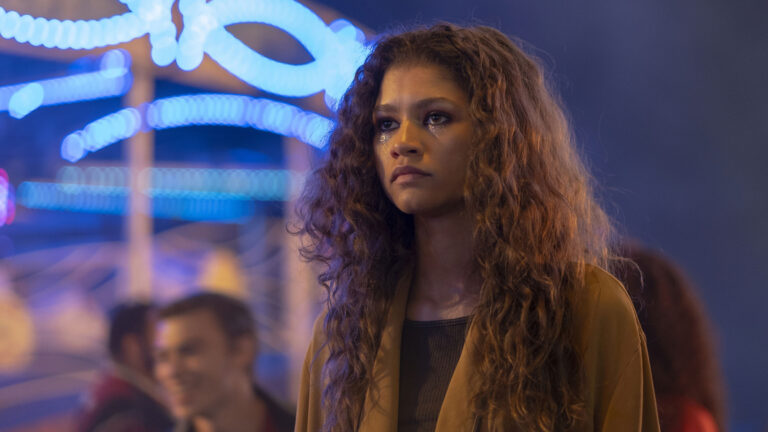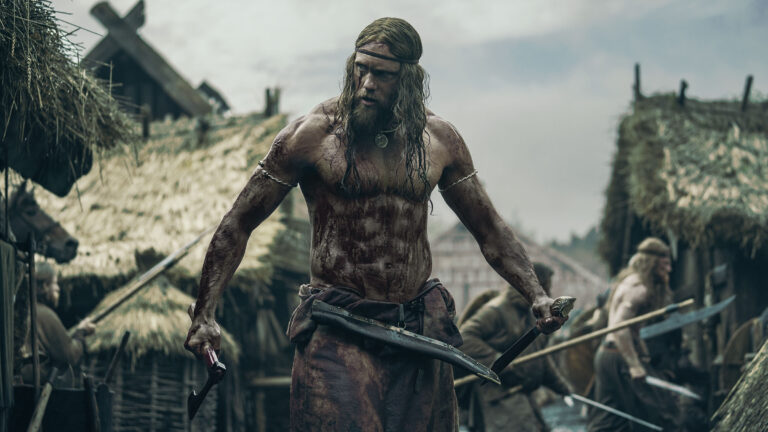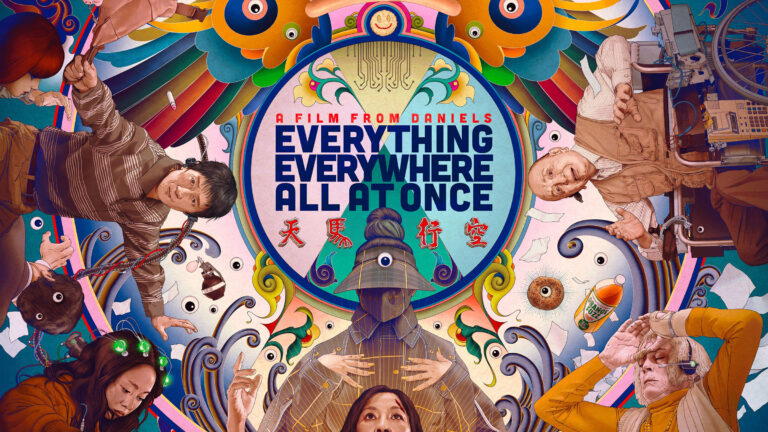Today we’re speaking with Azusa Yamazaki, the editor of Drive My Car, which won an Oscar for Best International Feature Film and a BAFTA for Best Film Not in the English Language. Azusa has edited numerous feature films, including Asako I & II, Dream of Illumination, and The Ark in the Mirage.
She has also cut several TV series in her native Japan. Our discussion was through an interpreter—Naoki Tanaka—who is a friend of Azusa’s from film school.
Listen while you read…
This article is an in-depth discussion of Drive My Car and may contain spoilers and plot reveals for those who have yet to watch the movie.
HULLFISH: What is your approach to a new scene when the dailies or rushes come in? What do you do first?
YAMAZAKI: When I receive new rushes, new dailies, for this project I had an assistant, so they go through the new rushes and organize them for me first. After my assistants have put together the rushes, I watch them from beginning to the end and I keep notes. I make a list as I watch the day’s footage.
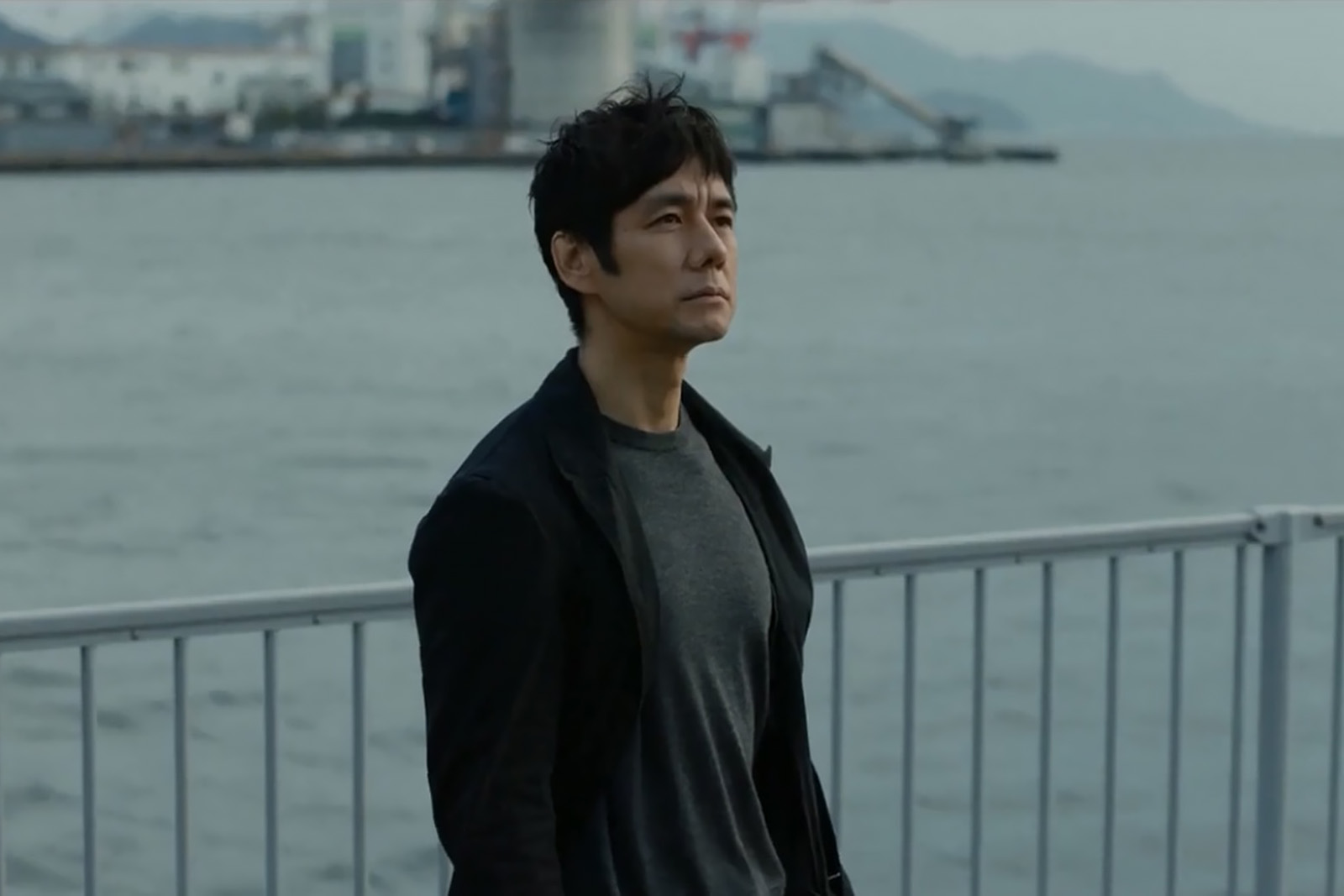
HULLFISH: Do you watch in a selects reel or watch individual takes?
YAMAZAKI: So in general, with a Mr. Hamaguchi film, in a way there’s no concept of a “not good take.” Every take is a possibility. So unless there is a technical problem that’s absolutely, obviously not good, I watch every single shot that’s been taken. So the assistants will re-order the scene in sequential order of the story. But I watch it from the beginning to the end, not selecting, just watching the whole thing through from beginning to end.
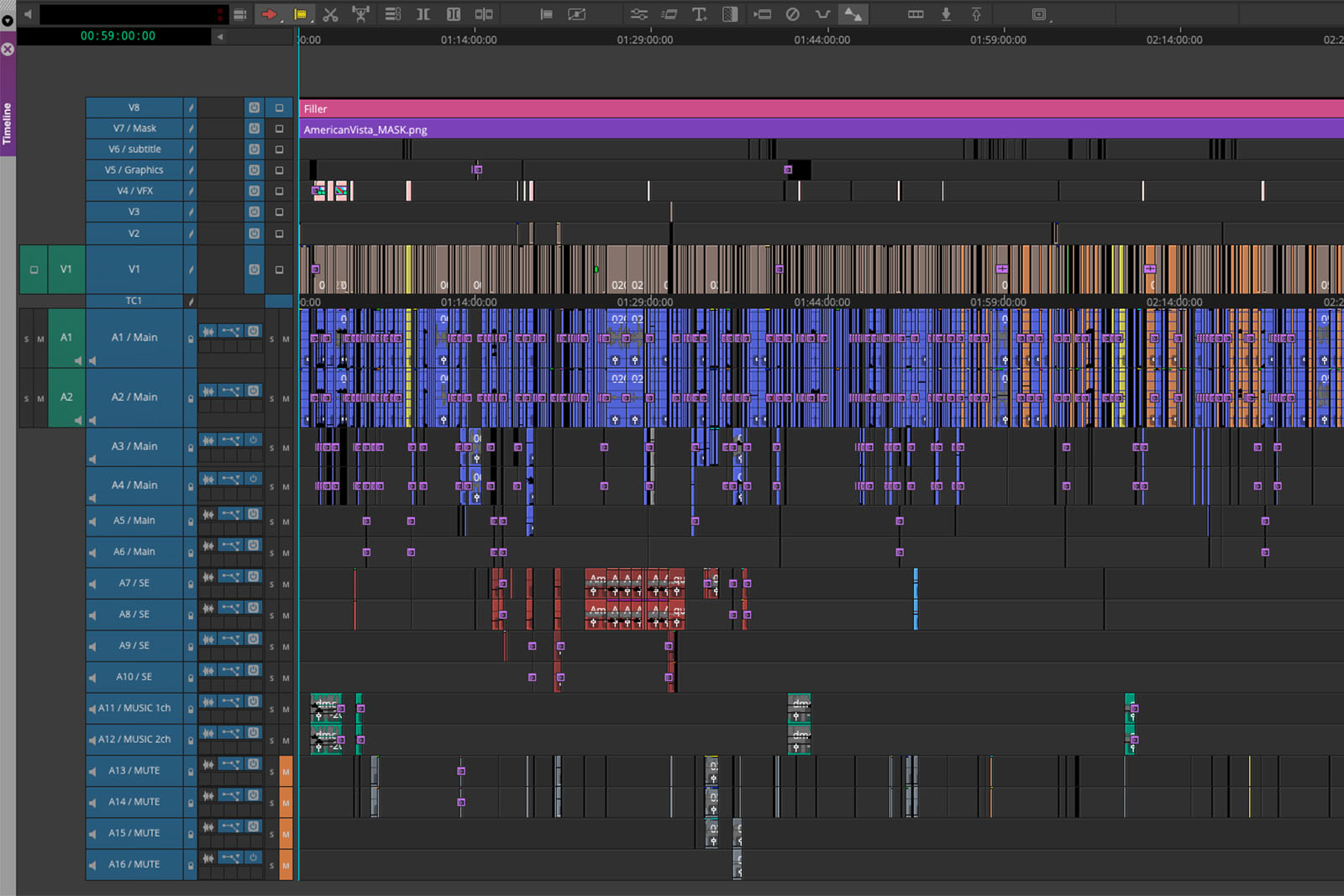
HULLFISH: Making handwritten notes or putting markers in the timeline?
YAMAZAKI: In general, my approach of taking notes is very analog. I mean, sometimes iPads, but usually I like to write down what I think or what I’ve noticed as I watch the rushes.
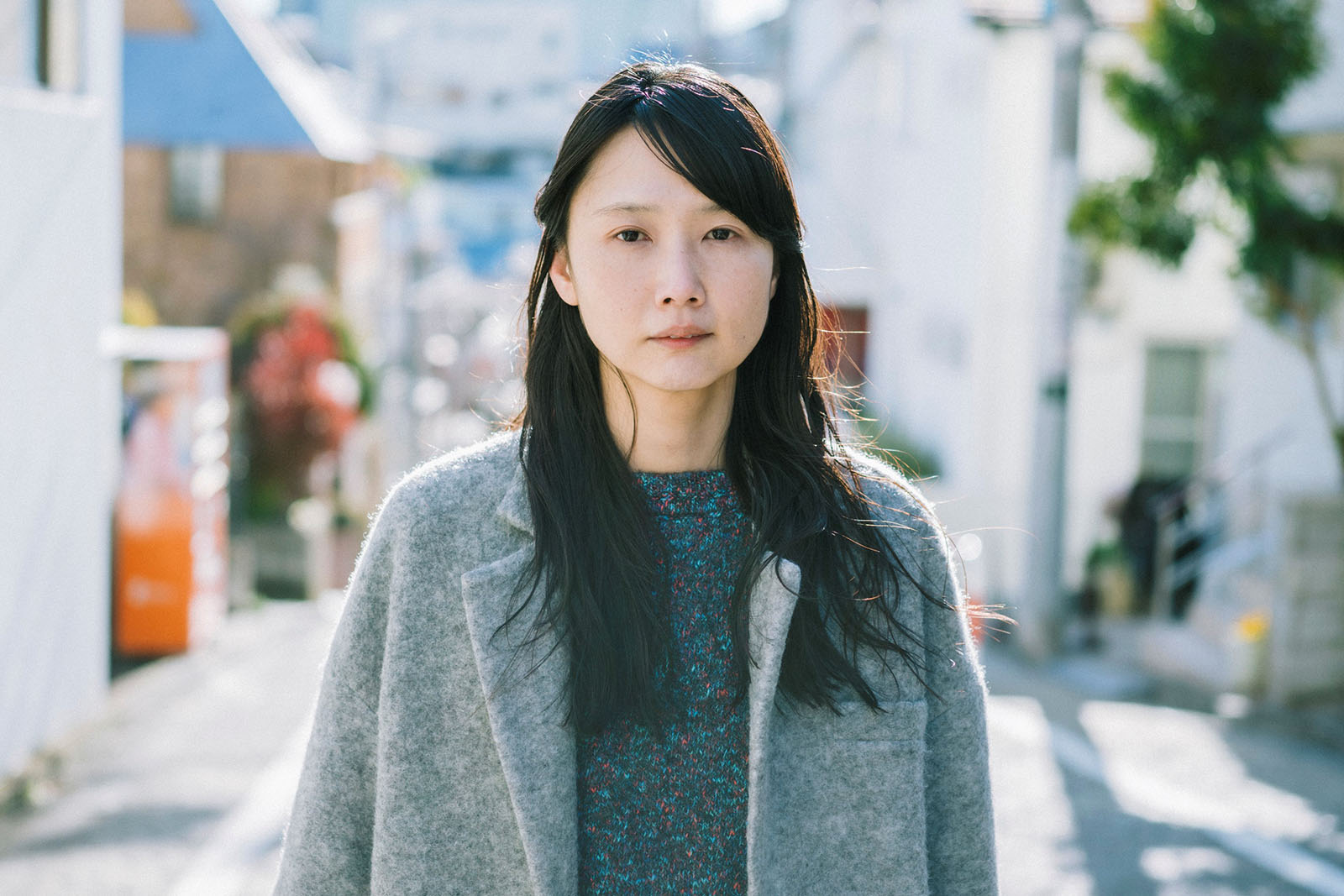
HULLFISH: Is it a typical workflow where you would edit an editor’s cut and show it to the director? Or do you work with the director even during production?
YAMAZAKI: Generally speaking with Mr. Hamaguchi, it’s a little different than working with other directors. Generally, if I’m working with another director, I might work on the editor’s cut while they’re shooting.
But with Mr. Hamaguchi it’s a very unique workflow where they finish their principal photography, then he would come into the editing room and we would watch the rushes together. We sometimes spend days watching what we have, so we start together.
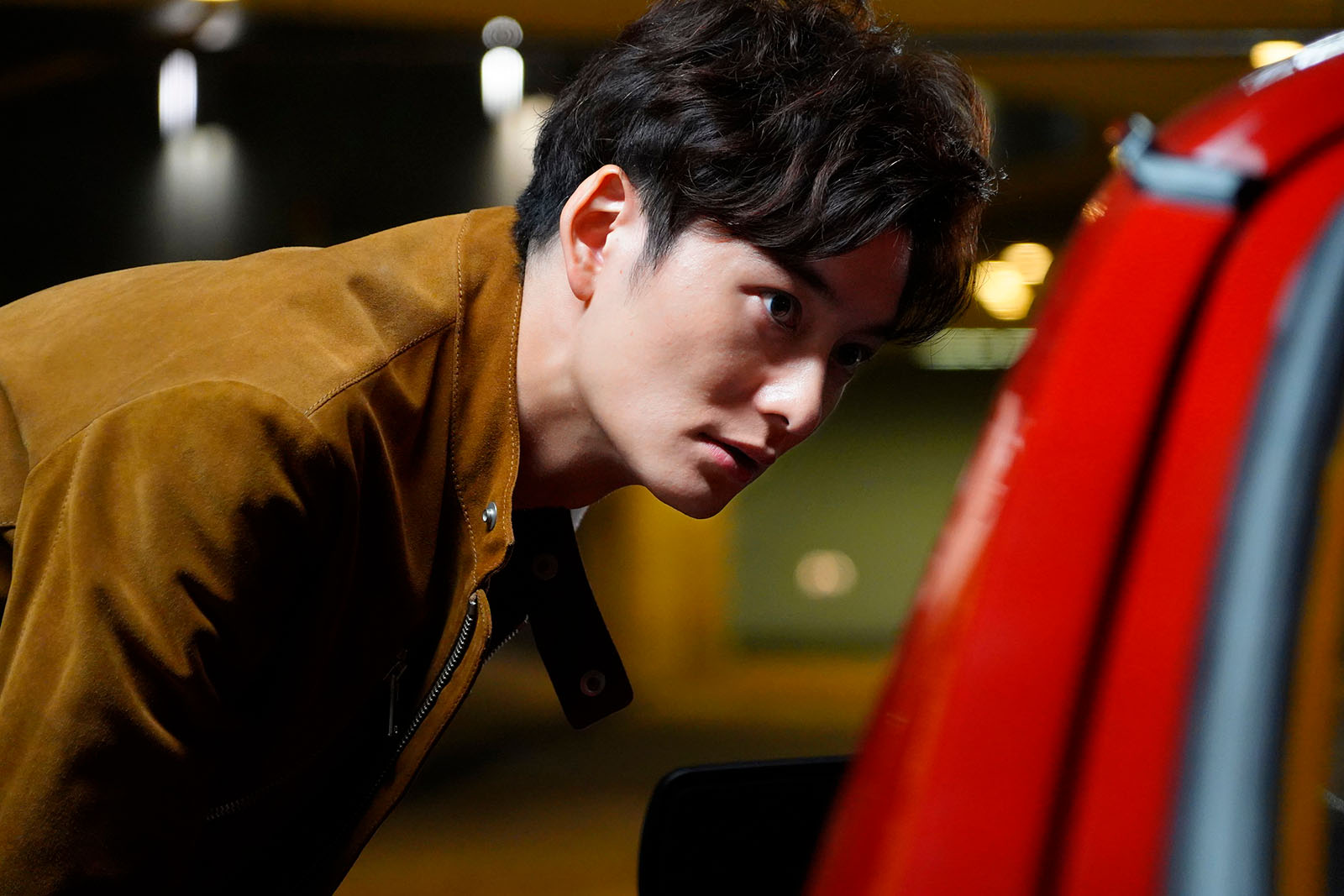
The reason he likes to wait until they finish filming is, as I said earlier, he doesn’t have a bad take. Every shot is a possibility. So he likes to concentrate on the directing when he’s on set. He doesn’t like to think if that was a good shot or a bad shot.
He doesn’t have a bad take. Every shot is a possibility.
That’s why the workflow has turned into this kind of “wait till we finish filming” so that he can concentrate on his directing on set and then worry about which takes to use after. He’ll rewatch them and refresh his memory. He’ll think about it. And then that’s when he decides if this was a good take or a bad take.
HULLFISH: Did you work at all during production? While they were filming?
YAMAZAKI: During production I don’t do any kind of editing. I don’t do any kind of editing behind his back either. Purely just watching the rushes.
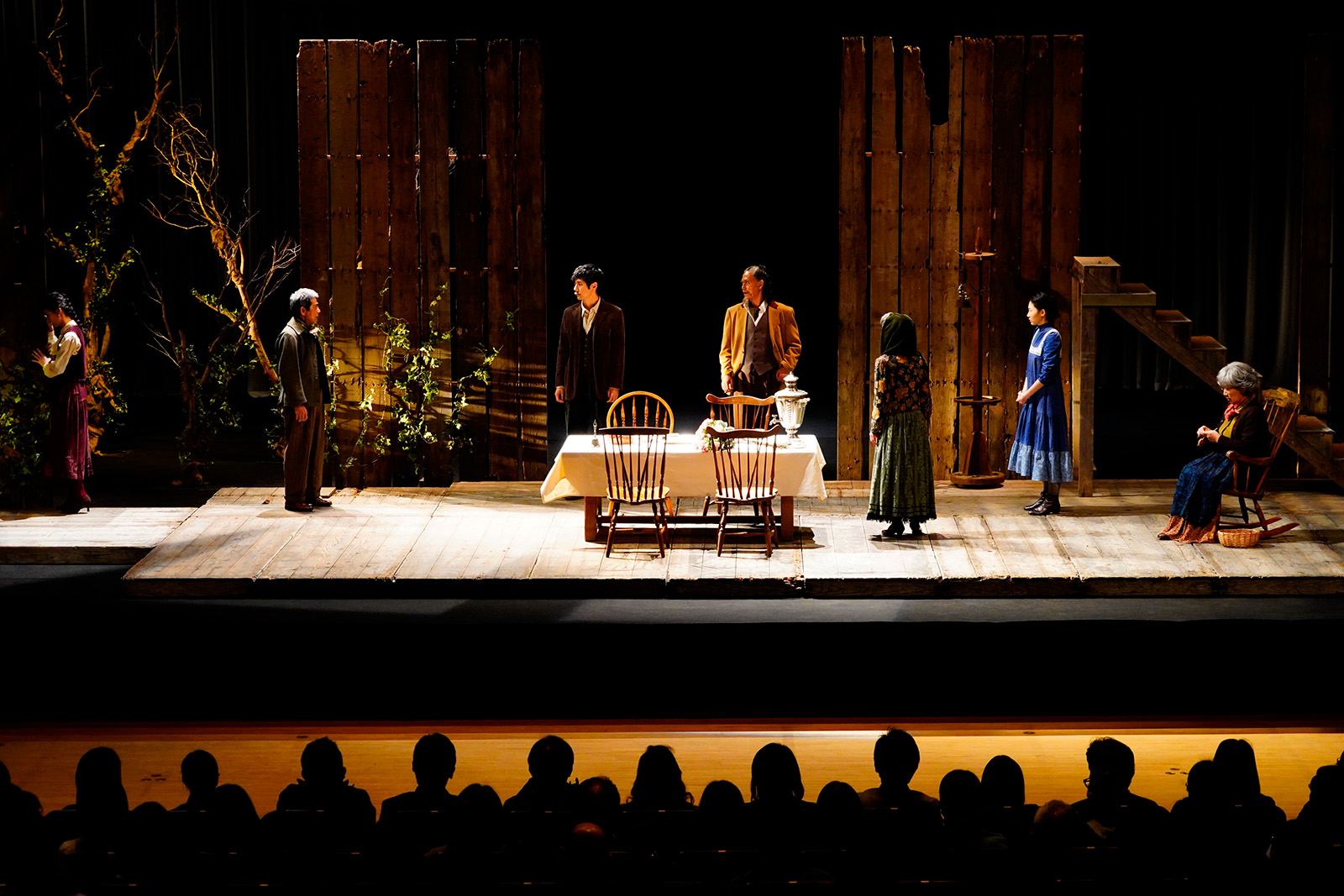
HULLFISH: Tell me a little bit about the structure of the film. Can you think of any examples of scenes that were rearranged from the script?
YAMAZAKI: So in this film, we reordered some scenes for structural purposes, but it’s something that doesn’t happen often in Mr. Hamaguchi’s films.
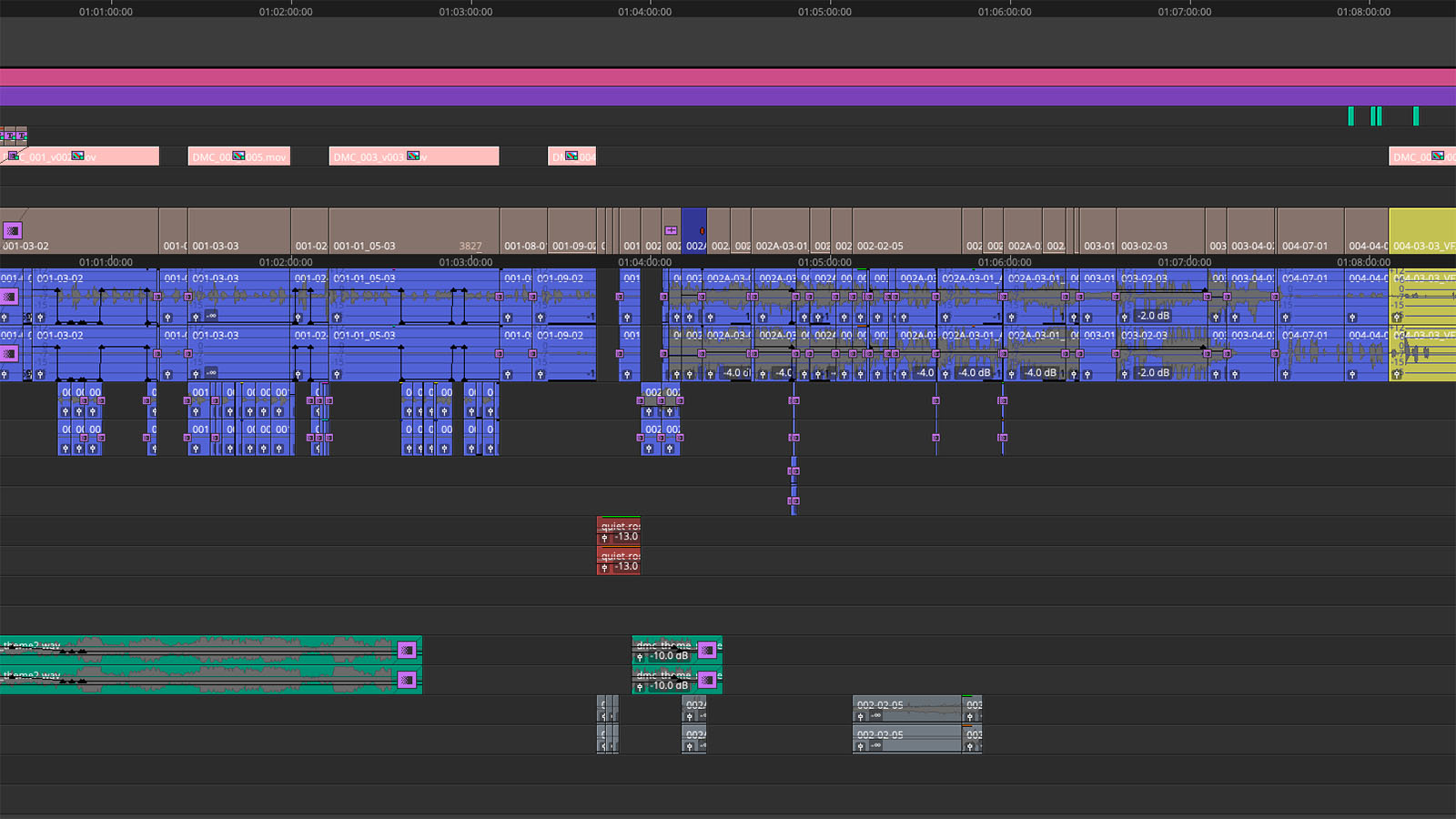
For example, the very first scene of the film where his wife is bedridden. That was not the original beginning of the film. That was brought in from somewhere else. So that’s one of the examples that we have changing the structure of the film.
Originally, the first scene was supposed to be Oto, his wife, recording her voice to the tape. It was a shot that was going to dolly up to her back in a dark room and she’s recording in a corner and the camera just creeps up on her back. That was the original opening of the film.
In the final movie, that original opening scene moved to just before traveling to Hiroshima. So the first reason they moved Oto’s bedridden scene, bringing that to the opening is that the director decided. But also it’s her voice. It’s the way she talked about her dream.
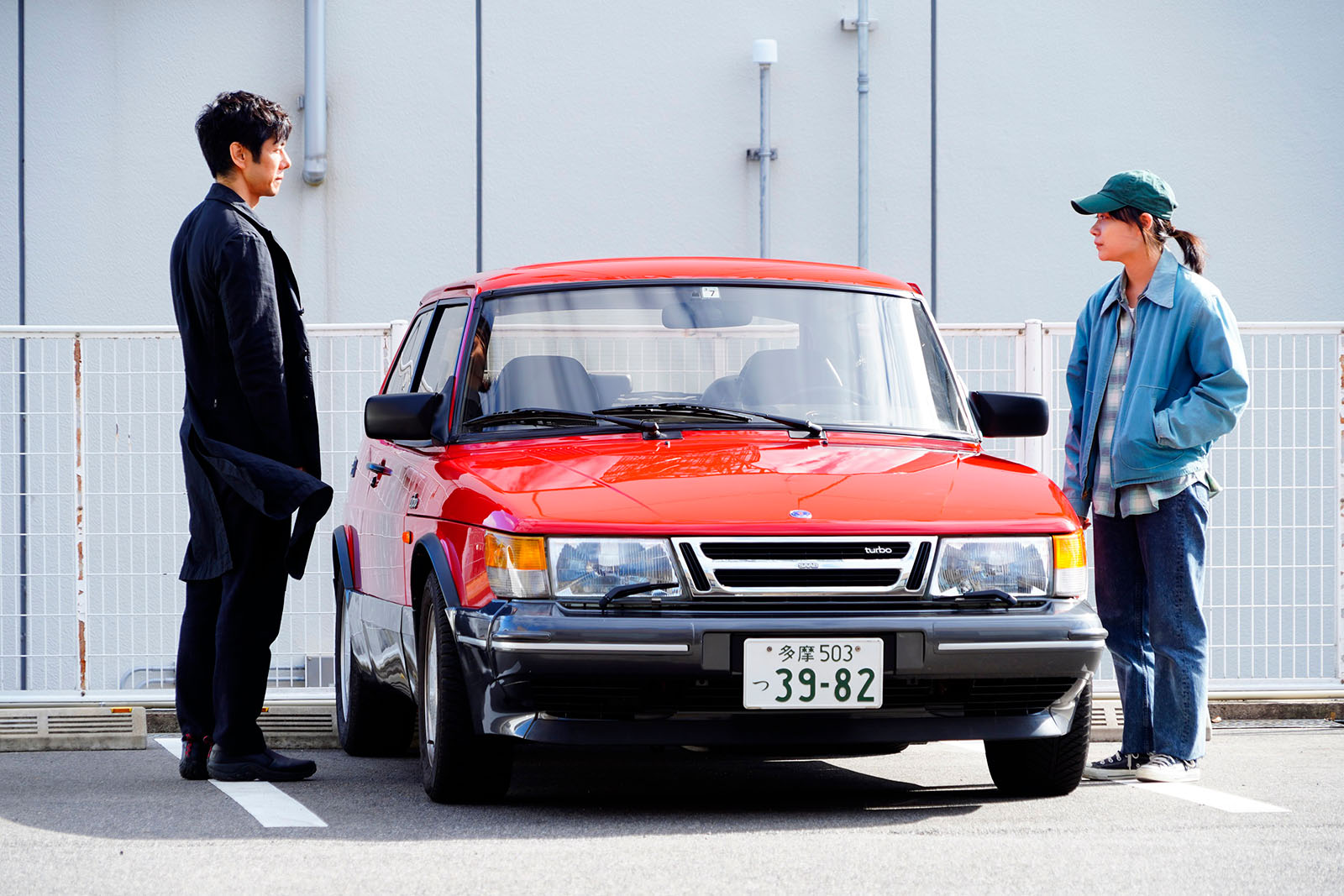
It was a very powerful scene. And I believe that that was part of the reason that he decided this needs to be our opening scene.
HULLFISH: Can you talk to me about another rearrangement of scenes and why it was done?
Click/tap to reveal spoilers
YAMAZAKI: Misaki’s confession that she killed her mother. That was originally going to happen much earlier in the film between her and Kafuku’s conversation, somewhere towards the second half of that very long conversation.
The reason we moved that scene to where it is in the final film is that, after we made some cuts, we had producers come in and watch the film. There was a discussion about trying to figure out the relationship between Kafuku and Misaki. It didn’t seem to be progressing the way it should. It didn’t feel right.
So after watching the review cuts and discussing with producers and director, obviously “I killed my mother” is a very heavy topic. It’s a very heavy story to share with another person and where it was originally it didn’t feel right.
So we decided to move it to the block where they are in Tohuku or where they’re going to Tohuku, and that builds up to them going to Hokkaido, where they both shed a tear together. So it worked out in a very nice way.
HULLFISH: Were there any films that the director asked you to watch or that the two of you watched together or discussed as inspiration?
YAMAZAKI: Mr. Hamaguchi asked me to watch some of the later works of Claude Chabrol. Specifically where to cut, just to pay attention on where to cut, why and where. He wanted me to pay attention to those editing points.
HULLFISH: What in those edits did you determine were interesting or were unusual?
YAMAZAKI: What Mr. Hamaguchi wanted me to pay attention to was how to cut action. How to jump certain actions. In his films in general, he’s very particular about continuity.
So the action has to be flawless, seamless, and we spend a lot of time adjusting to get the right action continuity. But for this film, he wanted me to pay attention to how to jump, how to make that cut. That in particular was his interest for this film. So that’s why he wanted me to watch Chabrol’s later works.
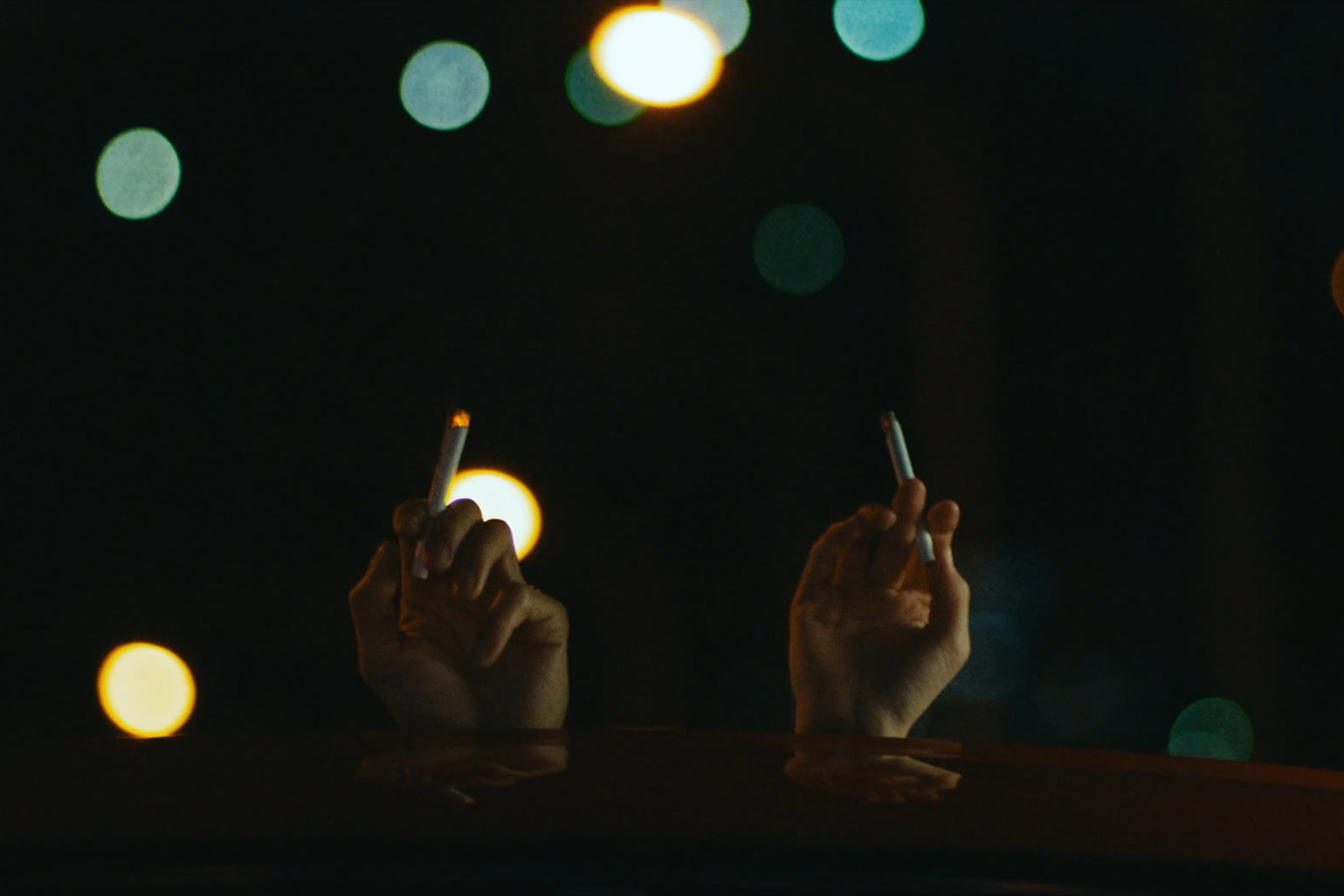
HULLFISH: Early on when Oto brings the young actor in to see Kafuku’s performance and Kafuku is taking his makeup off. He says, “Oh, let me change clothes.” And he starts to take his clothes off, and it’s a hard cut to him packing his suitcase. Is that one of those cuts that you feel is similar to that.
YAMAZAKI: That particular scene or that particular edit that you mentioned was in the script to begin with. This was a different scenario. It wasn’t directly inspired by his works. It was already written there by Mr. Hamaguchi.
HULLFISH: I didn’t notice any assistant editor jobs in your filmography, did you move directly to the editor’s chair?
YAMAZAKI: Of course we do have assistant editors in Japan as well, so it really comes down to money reasons. A lot of the lower budget films in Japan don’t have enough budget to bring in an assistant editor.
One of the reasons I don’t have an assistant editor credit is that, after graduating film school I worked on several indie films, and as I was doing that, one of the people I was working with said they’re going to work on a theatrical version of what they were doing—a feature length feature film of what they were working on—so I got on board with that film and then became an editor.
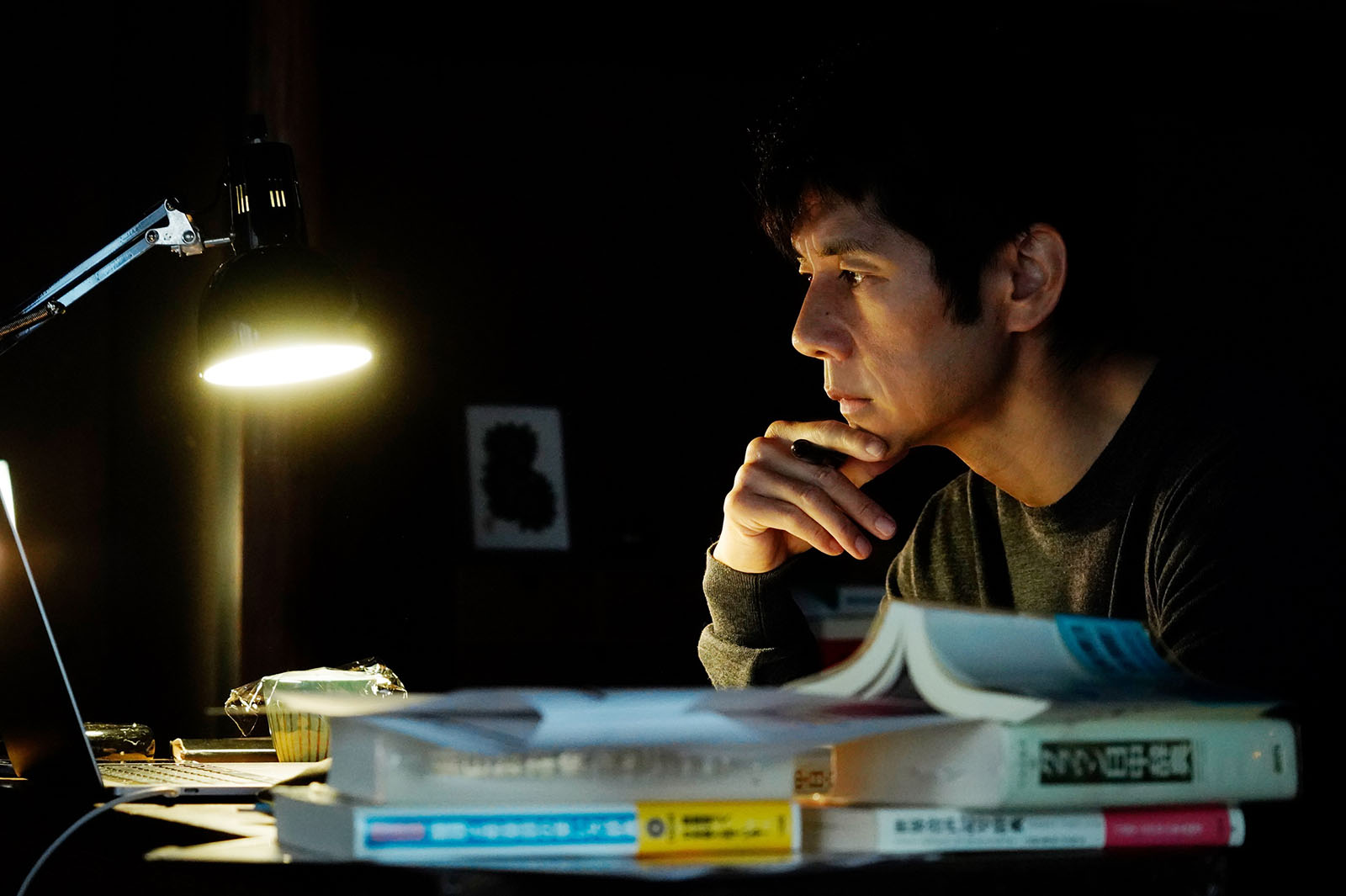
HULLFISH: Was there something that drew you to editing? Why did you decide this was a good way to be a filmmaker?
YAMAZAKI: To begin with I used to watch a lot of commercials or films and any kind of videos, and I thought I wanted to be a director. The realization came when I was in college. I would watch various films and notice specific editing techniques that were not as straightforward in telling a story. Like jump cuts.
That’s when I first noticed the importance of editing, and that’s really just what drew me into working on editing.
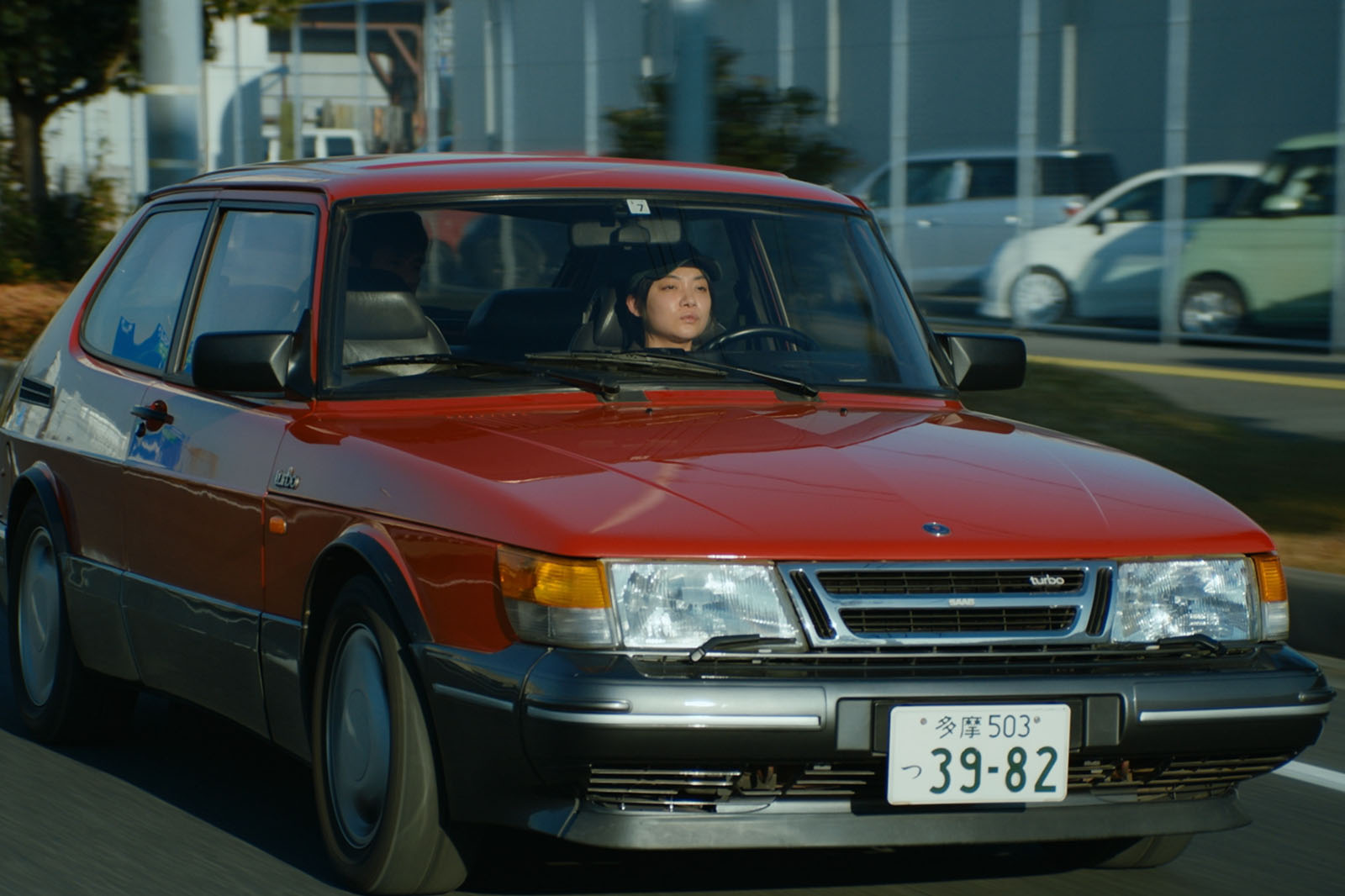
HULLFISH: Are there cultural understandings that are important to editing, or do you think that an American or European editor could have edited this film?
YAMAZAKI: Maybe you do need some understanding of cultural backgrounds. But I also believe that you can see or you can feel what’s on the screen. You can tell what’s happening just visually. So maybe you need some kind of a cultural background or an understanding, but I believe the image tells the story.
Once you start editing, the importance of cultural understanding just gets smaller and smaller. It’s more about visual storytelling.
Once you start editing, the importance of cultural understanding just gets smaller and smaller. It’s more about visual storytelling, and I can only assume that if an editor from another culture decided to edit this film, I would imagine that these characters will be more expressive, maybe a little more?
It’s only my imagination. I can’t say for sure, but I imagine that’s what would happen if an editor from a different culture looked at this film.
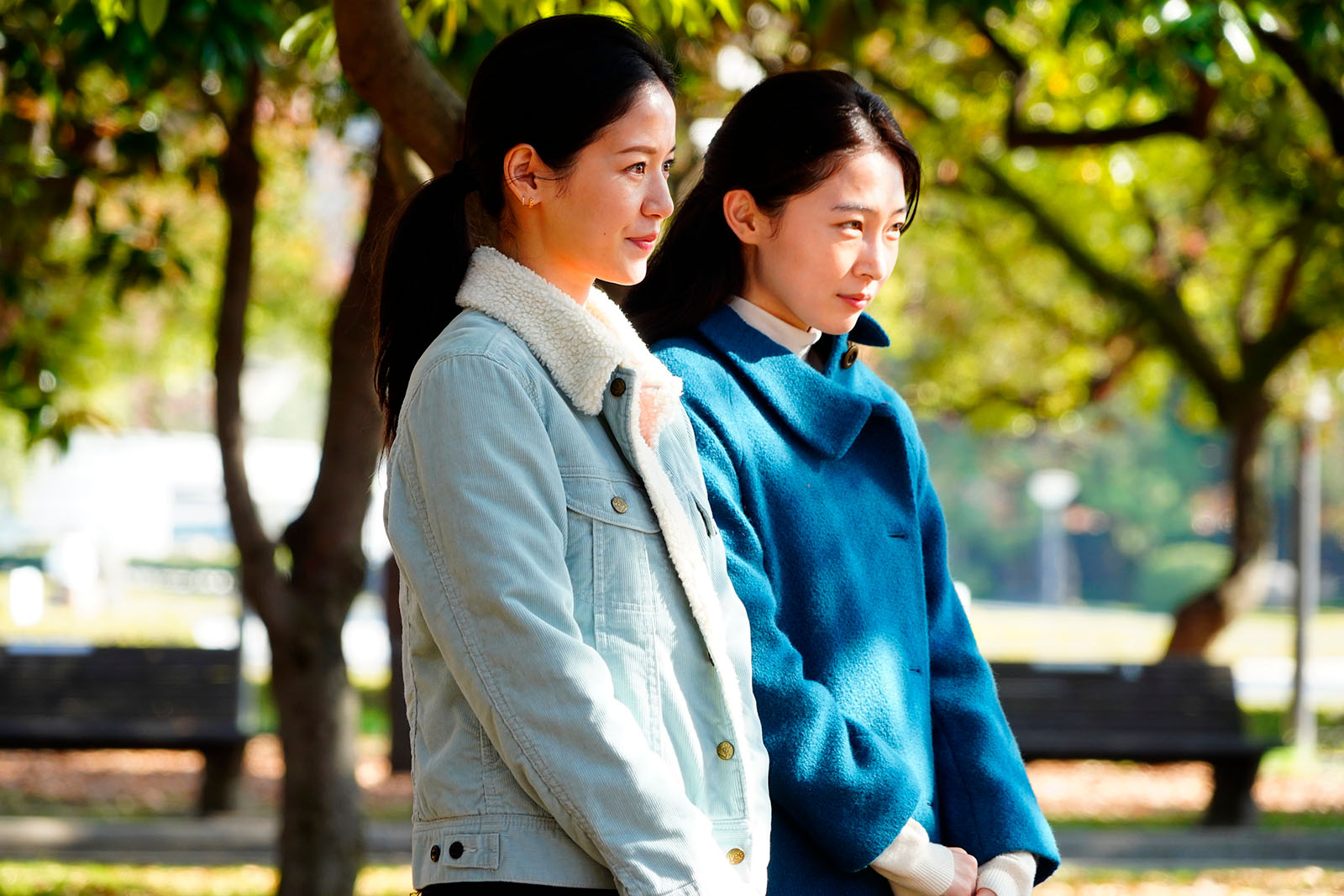
HULLFISH: One of the reasons why I asked this question is because of this clip where Kafuku meets Misaki, his driver, in the parking garage.
YAMAZAKI: So you brought up Misaki as an example. There was an intention behind editing her scenes. We purposefully made her seem like she had no emotion—more like a robotic type of person. That was the intention of the edit.
So we specifically cut out her blinking or cutting just before her line of sight shifts. We would cut just before she moves her eyes. Little things like that that we made to make her look kind of more mechanical. No emotion.
Now, I don’t know if that relates to cultural perception, but maybe it’s just how Mr. Hamaguchi directs his films. Maybe it’s just his style.
HULLFISH: Let’s talk about the value of shot sizes and how you choose which type of shot you will use for a particular moment. Maybe you can give an example.
YAMAZAKI: Maybe a good scene to talk about shot sizes is the dinner scene at the Yoon-su’s house. So in that scene, the hero of that scene is her sign language. Her hand movement is the hero of the scene. So we edited that scene based on that being the hero.
It’s like a puzzle. There’s a right shot size, there’s a right time to cut.
We structured the scene to make that more appealing. It’s a beautiful shot. So we worked really hard to make that shot stand out. And speaking about structuring that scene or any scene in Mr. Hamaguchi’s film, he believes there is a right piece to make that scene.
There’s a correct piece to fit in. It’s like a puzzle. There’s a right shot size, there’s a right time to cut. And I don’t know how it works, but once we start putting it together, this piece fits with this, this, this.
And then it’s just finding the right pieces and putting them together. And one additional note to that is this scene was inspired by Clint Eastwood’s Sully.
HULLFISH: And how was it inspired by Sully?
YAMAZAKI: The inspiration came from a conference room scene—and it happens a lot in Clint Eastwood’s film where you have so many characters in the same room—but there’s always the right expression and the right person to be on. And it happens a lot. And that’s where we tried to find a clue of how to make it happen.
HULLFISH: Often the characters in the film are not saying what they mean. The true meaning is in subtext. How can the editor help mold or craft subtext or show it to an audience?
YAMAZAKI: So as an editor, maybe we can create subtext by doing the small things like picking the right facial expressions of the actors or their small, subtle movements. Leaving that in the scene or maybe cutting them out. Maybe the duration of the shot—when to cut is an important part as an editor to create the subtext.
As an editor, maybe we can create subtext by doing the small things like picking the right facial expressions of the actors or their small, subtle movements.
HULLFISH: Because if you hold on the shot longer after the person speaks, you know that they’re thinking something else?
YAMAZAKI: Maybe. That’s very noticeable in the scene we talked about earlier where Kafuku takes off his makeup at the beginning of the film.
HULLFISH: Let’s take a look at this scene when Kafuku and the young actor are having a bar conversation and the actor says, “Oto must have been very happy with a husband like you.” Just those choices of when to cut and who to be on and what size shot to be on.
YAMAZAKI: For this particular bar scene, we tried many, many different variations. And this scene is maybe more about how Mr. Hamaguchi structures film. A lot of it was what he envisioned more than the editing per se. This scene in particular was more based on the director’s vision. I learned a lot by editing this scene.
HULLFISH: You stayed on the two-shot for a while. Obviously, if you wanted to, you could cut close-up, close-up, close-up. But there’s this choice to use this two-shot. And what do you think the value of the two-shot is, especially to start the scene?
YAMAZAKI: So the value or the importance of this two shot—this wider shot—is showing the distance between one person to another. So, for example, Kafuku doesn’t want to or he wouldn’t want to mentally get any closer to Takatsuki, the younger actor.
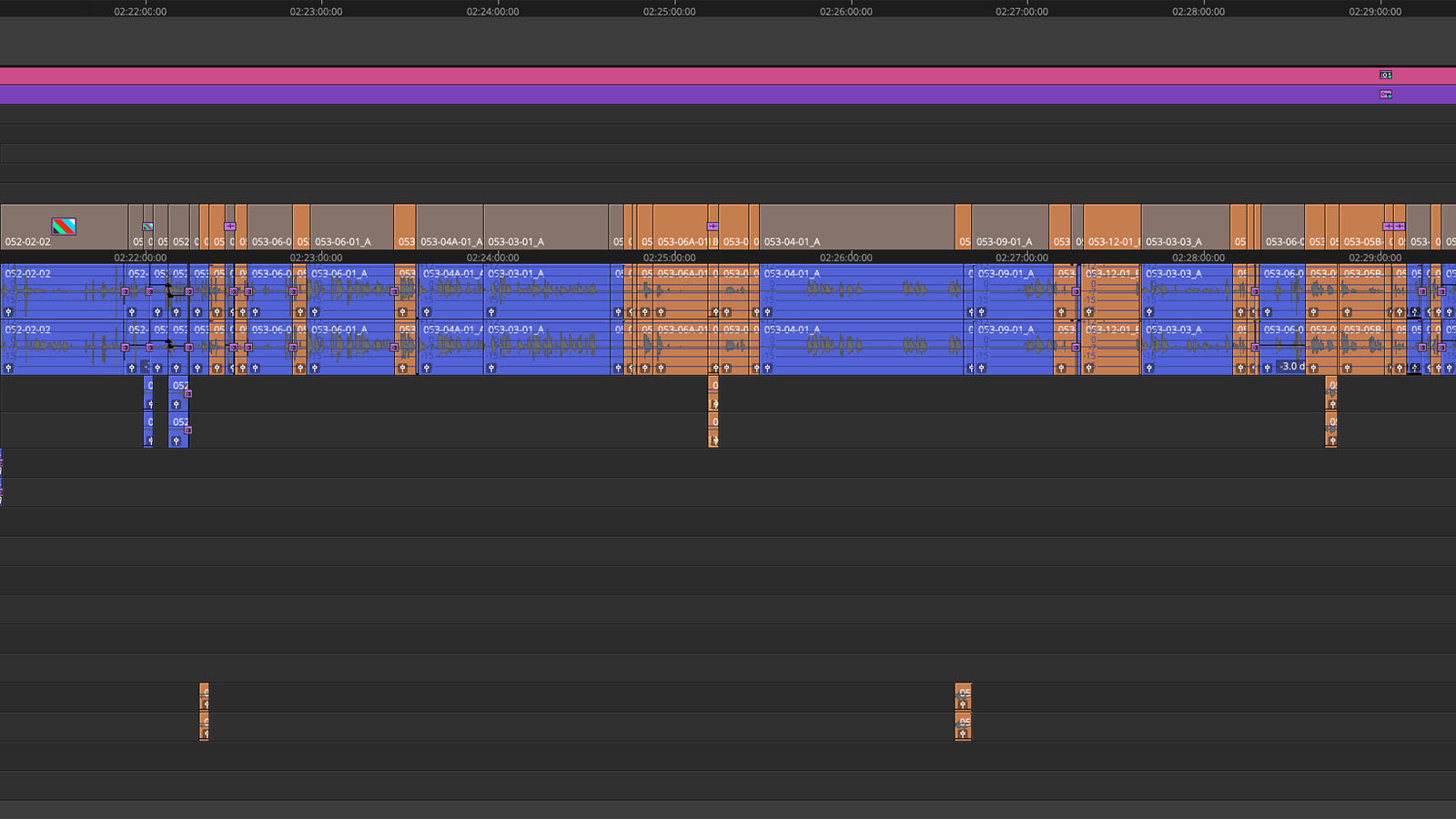
During their conversation, if Kafuku was interested or he showed any kind of interest in what Takatsuki, the young actor, was saying, those were the moments when we used closeups.
HULLFISH: Another place where I would love to talk about the choice of the shot size is there’s a discussion by the ocean side on these stairs where they go to have a smoke. And it’s largely done in this wide overhead shot. But it’s a very personal discussion, but there’s only close-ups at the end. Why have this personal discussion on this wide shot?
YAMAZAKI: This wide open overhead shot is the opening shot for this particular scene. And it’s kind of Mr. Hamaguchi’s principle about editing. Every shot has an expiration date. There’s going to be a moment where you’re going to get tired of it or you want to move on. He believes that.
Every shot has an expiration date.
Because we’ve worked together before, we have a shared experience concerning when is the right moment to cut. We cut to the close-up at the end because the moment has come. That overhead shot, the shining moment of that shot just kind of expired at that moment. So we moved to close-up.
We used the close-ups when they handed the lighter to each other. When there was any kind of movement, that’s when we used the close-up. But in general, we wanted to keep them together in the frame.
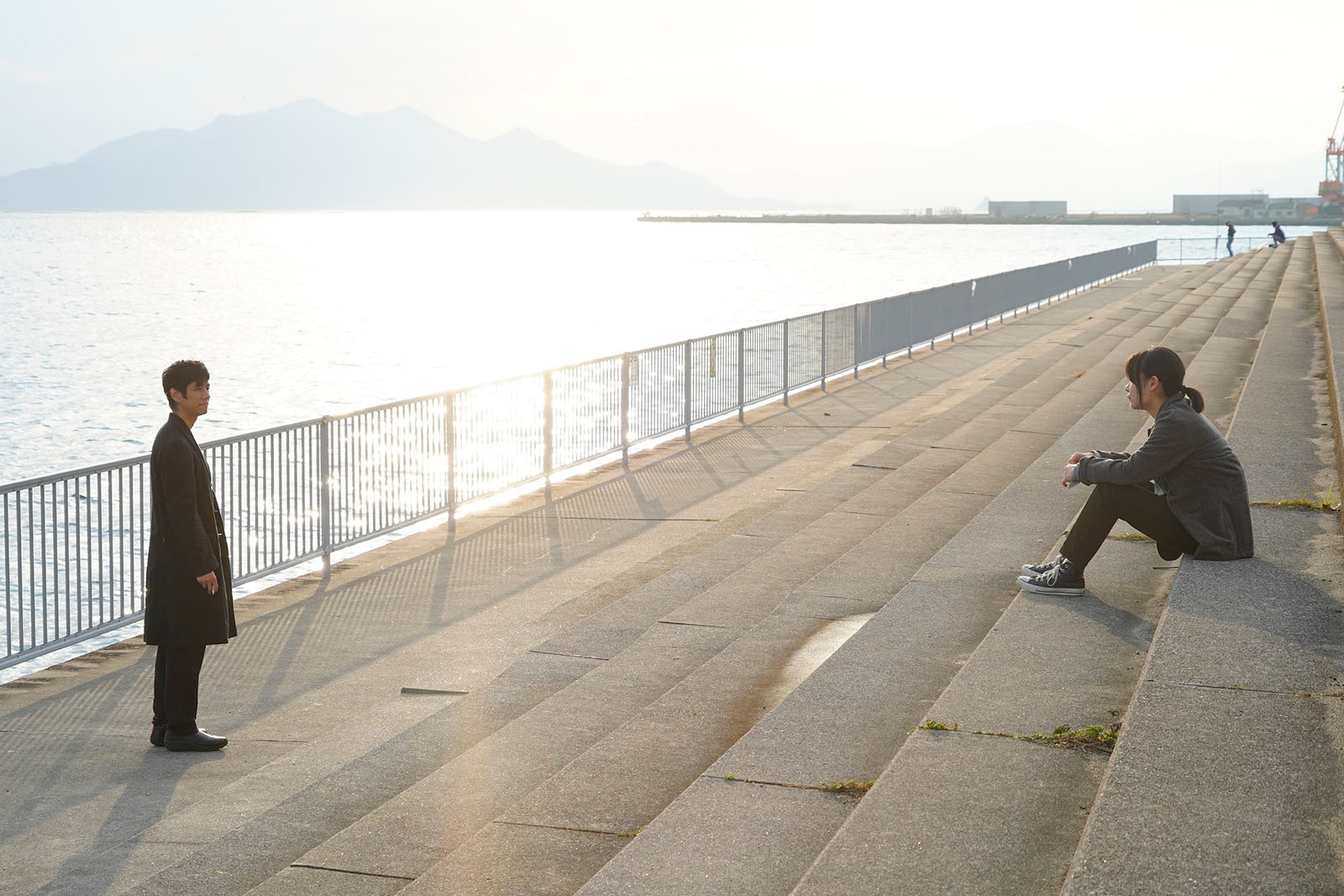
The position of that was really the cinematographer—Hidetoshi Shinomiya’s decision. It was the right decision by him to place it there in that angle, to keep both of them in the same frame.
HULLFISH: There is the use of a pre-lap audio. When we go from the wife’s funeral to the play, you hear the play while you’re still in the funeral scene. What is the value of a pre-lap?
YAMAZAKI: So in this film we use the pre-lap on two different occasions for different reasons. The first scene you mentioned where you have the wife’s funeral, then you hear the sound of the play come in, and then you move on to the next scene.
We use that kind of technique when we want to connect the emotion between two scenes. We want to carry over that character or the scene’s emotion to the next thing.
I don’t know if seamlessness is the right word to use, but we want to bridge those two scenes together. Change your emotion from one emotion to another. That was one of the uses.
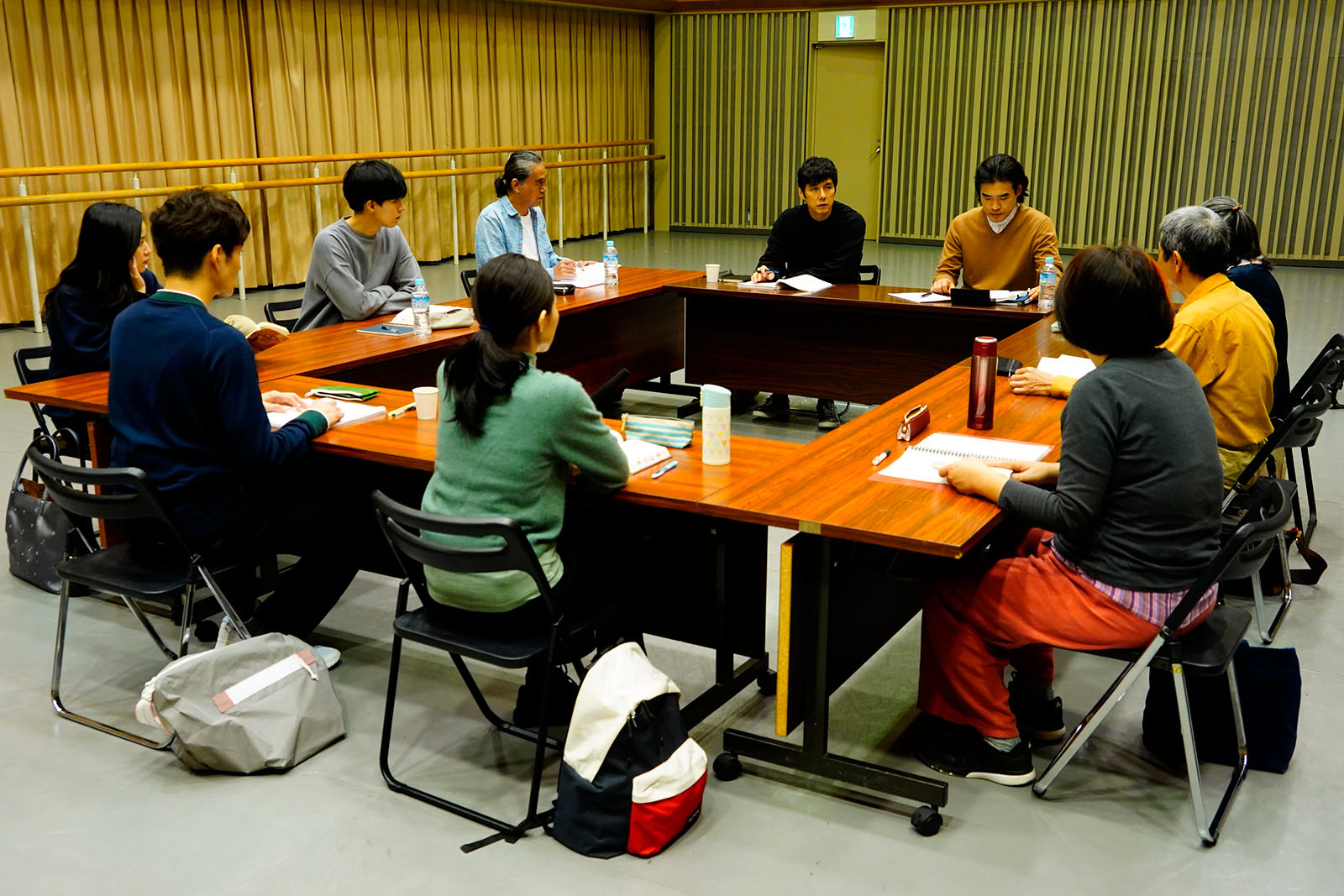
Another pre-lap that we used was a gunshot. And this was actually going into the stage play. It was the reverse of what we did earlier. We wanted to cut off any kind of emotion that you felt, and we wanted to snap you out of it and bring you into the next scene. So same technique, but two different purposes.
Another use of a pre-lap was Kafuku doesn’t say much. If we leave him on a shot where he doesn’t say anything, but you hear the rehearsal, you hear the other actors talking in the background—what they say in the background they’re speaking for him. That’s another use that we try to accomplish. He doesn’t have to say anything but we let the film speak for him.
HULLFISH: So some dialog from Uncle Vanya would be speaking what’s in his mind?
YAMAZAKI: That’s right. It helps the audience connect what’s said in the play and what’s in real life in the story. It helps the audience understand the two worlds.
HULLFISH: One of the last scenes in the movie, we’ve kind of gone backstage with some other actors and they’re watching—in the green room or in their dressing room—they’re watching the play take place on a TV screen, and then we follow that through to the end of the play. Could you talk to me about cutting that sequence?
YAMAZAKI: We didn’t try many variations like we did with the other scenes. We ended up where it is pretty fast. So in this particular scene, Mr. Hamaguchi doesn’t have a sort of a storyboard in his mind. He concentrates on the directing on set and he decides how he wants to put the film together in his mind as we watch the rushes.
Mr. Hamaguchi doesn’t have a sort of a storyboard in his mind. He concentrates on the directing on set and he decides how he wants to put the film together in his mind as we watch the rushes.
HULLFISH: Most of this scene is played on this forward shot, looking at the two actors facing the camera as she’s signing behind him. It’s a very long shot, interrupted by cuts to Misaki. Can you explain the choice of when to go to a reaction shot? Because they’re used very sparingly.
YAMAZAKI: To kind of explain how and when we cut to Misaki and when we went back, generally we cut to Misaki when the dialogue of that scene hits her really hard. When that dialogue means something to Misaki we cut to her and then we show enough of her reaction and then go back to continuing the dialogue.
The most effective reaction comes towards the end of the play. That was generally the use of the reaction shots for Misaki. We also showed the wide shot of the audience early on so that the film’s audience knew that Misaki was in the audience to watch the play. It’s just information.
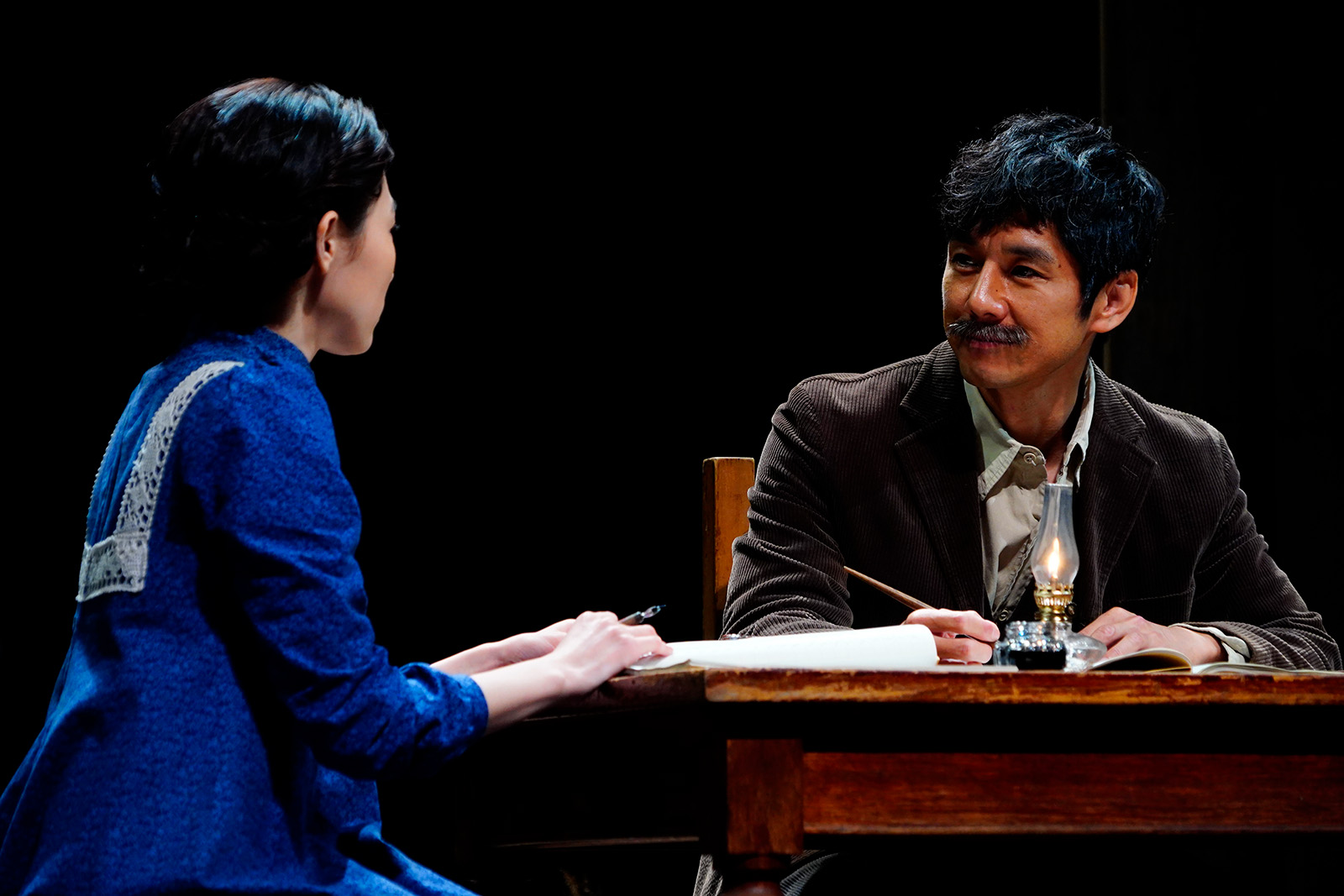
But as the play moves along, that shot starts to play a different role in the scene. But specifically, we tried to avoid an obvious cut where dialogue would directly affect Misaki’s emotions. That was not the purpose. So we tried to avoid the obvious.
HULLFISH: There’s a wide shot of the play and then there’s a wide shot of the audience. I was thinking that you’d want to show the audience before you started showing close-ups of Misaki. Is that true? Did you feel like you needed to set up the audience before you saw an individual audience member?
YAMAZAKI: One thing was just to explain where we are and what’s happening. That’s one big reason. Misaki is in that wide shot, but it’s too early to feature her in this scene. We just wanted to set up the scene that this is a play and the audience are here to watch the play. It wasn’t the right moment to bring her in as a featured character in the scene.
HULLFISH: The movie is quite long and there’s a lot of driving. What is the purpose of showing tunnel scenes and the driving scenes and going to places when you could just cut to them arriving at Misaki’s old hometown. But instead, we watch the journey. What is the value of the journey?
YAMAZAKI: Actually showing this journey is kind of something that we shared from the early stages of the editing. We wanted to share this journey with the audience.
You can cut even shorter, but we wanted the audience to experience this journey—this traveling with the characters.
So sure, you can cut even shorter, but we wanted the audience to experience this journey—this traveling with the characters. And as you travel along with them we hope that the audience would feel some kind of an accomplishment or they went through this journey together with these characters, so you’re gratified by going through all this traveling with the characters.
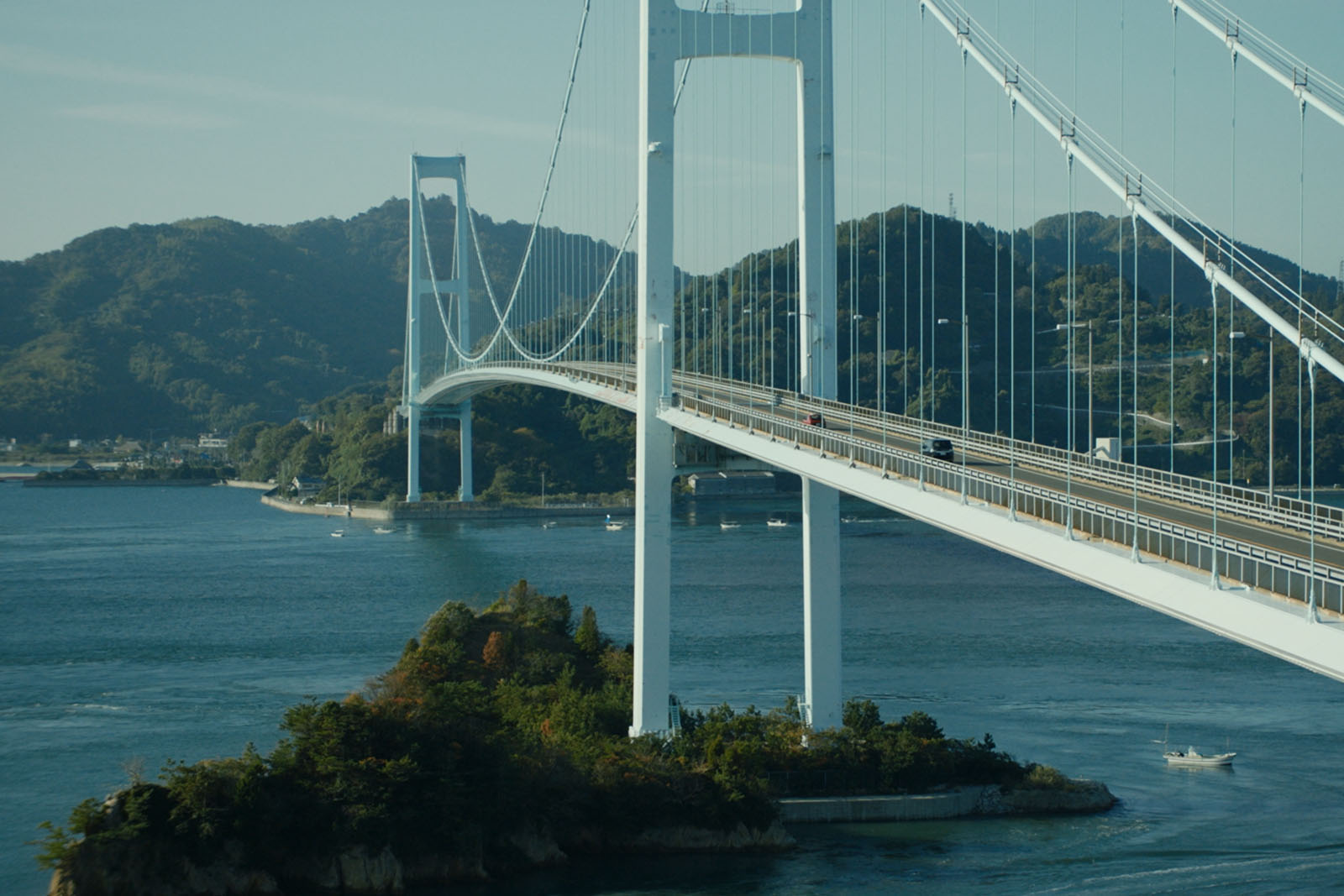
Then you have the climax in Hokkaido and then the play ends. Everything closes. Your journey comes to an end. That’s what we were trying to accomplish by showing you the driving.
May I ask a question of you?
HULLFISH: Please!
YAMAZAKI: In Japan, we don’t talk a lot about editors or the importance of editing. It’s not discussed openly. There’s not a lot of discussion compared to the U.S. or Europe, and we don’t have a lot of competitions that have editorial awards. Very few.
And it’s my impression that people outside Japan kind of know the importance of editing. So my question is—at least in the U.S—what created this important position of editors? What makes people understand that editing or editors are important?
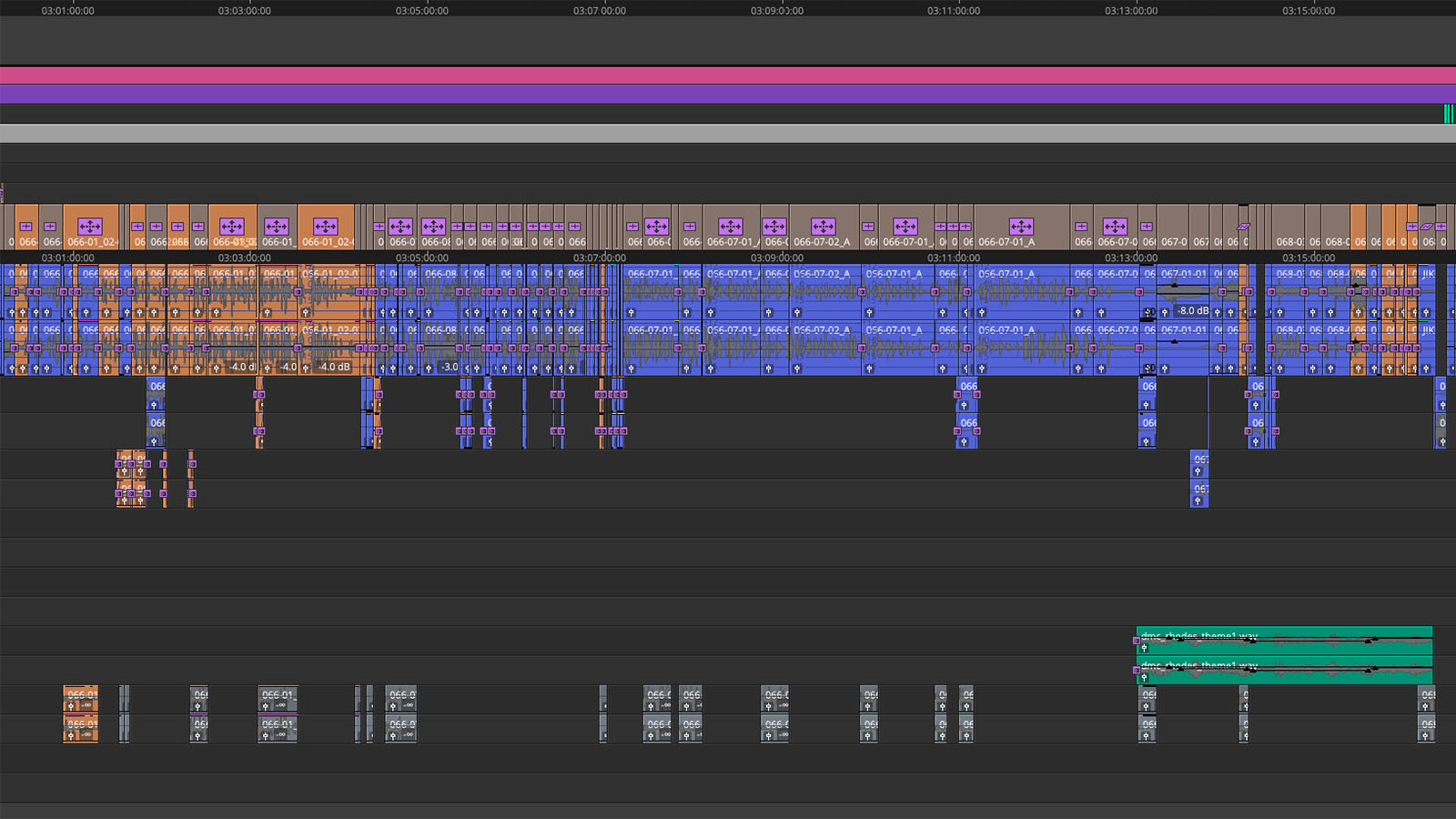
HULLFISH: I don’t know that the general public understands the importance of editors. I think that the Oscars decision to cut out the editors from the live presentation shows that.
Also I think that there are many American and European directors who value their editor and have made statements about how important the editor is. So when a director says how important the editor is, then everybody knows it.
YAMAZAKI: It’s my impression that we don’t talk about editing so often. So it was a good surprise, good shock, but surprised that I was even asked to do an interview today.
HULLFISH: I do interviews with editors. I’ve done them for eight years. I’ve interviewed hundreds of editors, and that’s all I interview. So because this is a beautiful film, I wanted to interview you.
YAMAZAKI: Thank you. Thank you.
HULLFISH: Did you know that I have a book about editing that’s been translated into Japanese?
YAMAZAKI: I have a copy! I remember when the book came out there were a lot of editors who were excited to read your book.
HULLFISH: Hopefully you will be in the next book. Azusa, thank you so much and Naoki, thank you so much for your interpretation.
TANAKA: You’re welcome.
HULLFISH: Azusa I really appreciate your great wisdom about the movie and Naoki thank you for your interpretation of her words. Dōmo arigatō.

